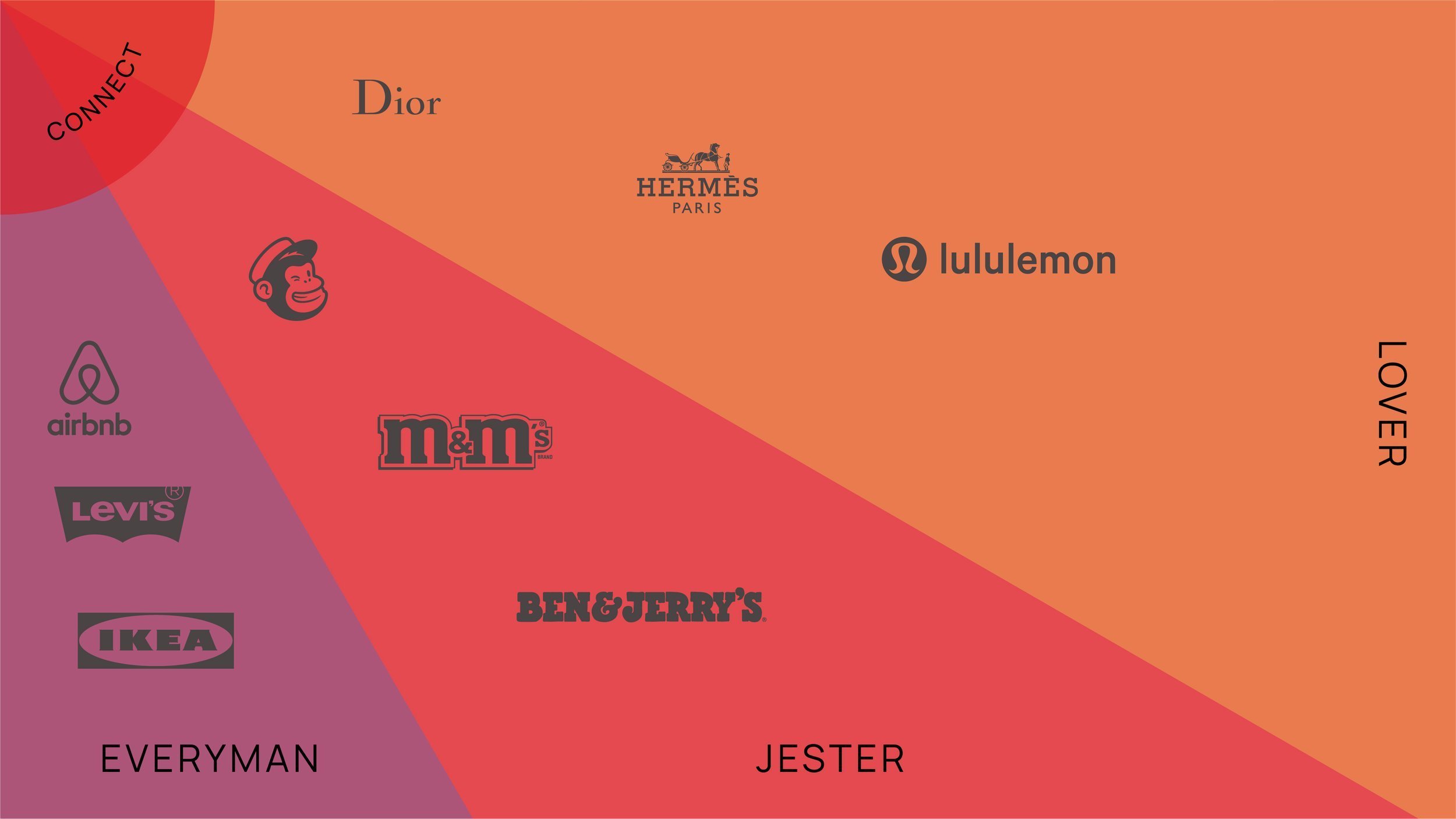Learn to Use Brand Archetypes
Brand Strategy 101 >
Core Framework >
Learn to Use Brand Archetypes
Share via
By knowing our brand's personality, we know how our brand should communicate, and how our brand should speak to its audience.
— Growth Archetypes
— Risk Taker Archetypes
— Connect Archetypes
— Structure Archetypes
Introduction to Brand Archetypes
Brand personality is a core phase of the brand strategy framework. In this post, we dig deep into this phase, and understand why we use archetypes, what they are and how they can help you communicate your business.
Jungian Archetypes were originally conceived by Psychiatrist Carl Jung to categorize personality types. First applied to the advertising industry in 1939, these archetypes help position products to foster greater brand loyalty. With our clients, we talk through each of the archetypes and see which resonates most.
The brand must fall into only one of the archetypes, we work with the client to filter down to the essence of the brand, finding the singular personality archetype that is the truest expression of the organization.
By knowing our brand's personality, we know how our brand should communicate. How our brand should speak.
There are 4 categories of brand archetypes: growth; structure; connect and risk-taker.
Growth Archetypes
Innocent — The Innocent archetype has the need to be free and happy and to keep life simple. They are optimistic, positive and carefree. They fear being punished for doing things against the norm.
Example brands: Dove, Evian, McDonalds
Sage — The Sage brand archetype seeks out truth and is motivated to find wisdom. The Sage is most fulfilled by finding answers whilst being seen demonstrating intelligence and problem-solving skills.
Example brands: Google, Morgan Stanley, TED
Explorer — The Explorer brand archetype craves adventure. They are independent and boldly ambitious. They see Adventure as a kind of enlightenment, explorers are motivated by self-discovery.
Example brands: The North Face, Jeep, National Geographic
RiskTaker Archetypes
Rebel — The rebel archetype is a radical thought leader. True revolutionaries and rebel brands have bold ideas but they can sometimes be doubted and thought of as risk-takers.
Example brands: Virgin, Harley Davidson, Diesel
Magician — The magician brand strives to have a strong sense of place in the world and identifies most when creating and realising strong visions. Magician brand archetypes make innovation and transformation look easy, resonating most with technologically-led brands.
Example brands: Dyson, Disney, Amazon
Hero — The Hero approaches any challenge, inspiring others along the way. Hero archetypes are motivated by the thought of leaving a mark on their industries, and the world. The hero fears failure and quitting.
Example brands: Nike, FedEx, BMW
Connect Archetypes
Lover — Motivated by a desire for intimacy, Lover archetypes want to feel attractive and are great at showing their affection. Passionate brands, Lover’s are naturally found within cosmetics, jewellery, and luxury fashion brands. Lover archetypes want to make people feel special.
Example brands: Dior, Lululemon, Hermes
Jester — The Jester lives in the moment. Jester’s are innovative, playful, expressive and fun loving. Jester’s are great at thinking differently, and doing things with their fun approach. Comfortable in their own skin, Jesters are unafraid to bend rules or stand out.
Example brands: Ben & Jerry’s, Mailchimp, M&Ms
Everyman — The Everyman archetype aims to meet consumers at their level. The Everyman finds beauty in everyday life, has a respected value. Easily relatable, they fear standing out, and will do anything to fit in with their peers.
Example brands: Levi’s, Airbnb, Ikea
Structure Archetypes
Caregiver — The Caregiver archetype finds purpose when helping others. Full of empathy and understanding, Caregivers suffer from the inability to say no even when it has a negative impact on themselves. Often associated with maternal brands, charities and not-for-profits.
Example brands: Nestle, Johnson & Johnson, Toms
Ruler — The Ruler brand archetypes are motivated by their power and control. They are known for being leaders in their fields, confident and strong-minded.
Example brands: Rolex, Mercedes, Chanel
Creator — A true visionary, the Creator is passionate about the process of creation. They are driven by unique ideas, and are artistic and creative in their purpose to achieve perfection.
Example brands: Apple, Lego, Adobe
Other Posts in Brand Strategy 101, from Our Framework Deep-Dive —
How to Conduct a Brand Audit →
Uncover a Brand's Core Values →
About the author, Adam —
Adam is the founder of BrandCraft, a branding and design agency.
On top of our client-facing projects, our small team developed BrandWerks where we create brand strategy tools and templates to help you master brand strategy and the business of design.
Our actionable tools are fully editable and founded in a commercial approach that guides your clients through the brand strategy process.
Learn more —
BrandCraft ➝
Brand Strategy Tools & Templates ➝











